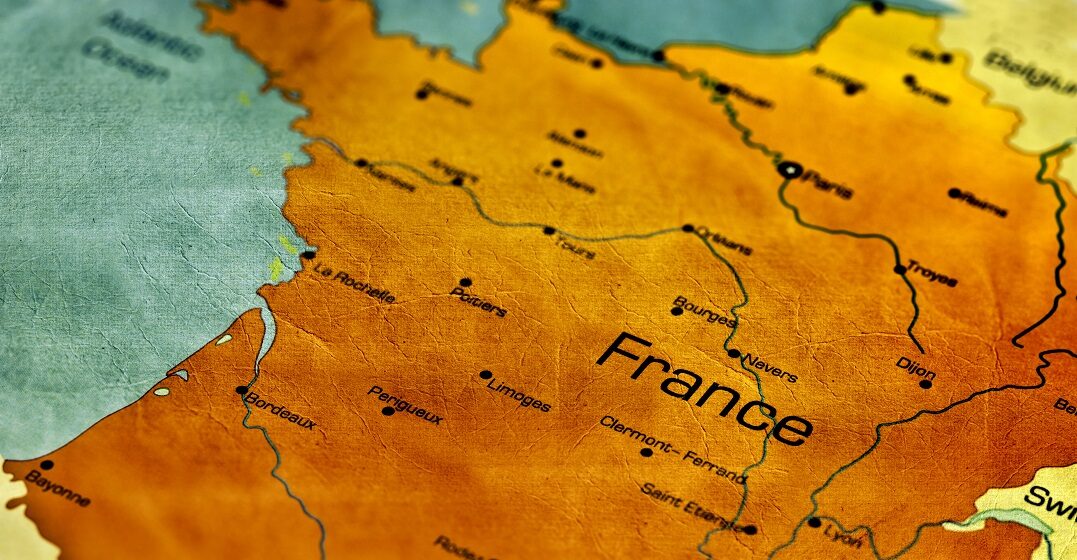Published on August 10, 2023

The physical geography of France: A look from inside out

If you’ve ever been on a road trip throughout France, you already know how naturally rich and variegated the land is. The physical geography of France has helped shape the identity and character of the country in many ways. Natural barriers, such as rivers, mountains and seas, serve as boundaries separating France from its neighbors. The country’s varied landscapes and climates have also allowed for specific industries, such as agriculture and tourism, to grow and thrive.
The geographical features of France have even influenced the evolution of the French language, through its close proximity to foreign influences and its open seas that set the stage for worldwide expansion. It’s almost as if, by learning French, you’re also learning about the land it comes from. So, let’s take a trip across France and explore its unique geographical features.
With a total surface area of 551,500 square kilometers (213,000 square miles), France is the third largest country in Europe. It shares borders with eight countries: Spain, Andorra, Monaco, Italy, Switzerland, Germany, Belgium and Luxembourg.
Several mountain ranges separate France from its neighbors. To the east, the Alps and the Jura ranges stand before Switzerland and Italy. To the west, the Pyrenees range marks France’s borders with Spain and Andorra.
Elsewhere, the country boasts a coastline that runs over 3,427 kilometers (2,129 miles) in total. Notable bodies of water bordering France include the Mediterranean Sea in the south, the Atlantic Ocean in the west and the Channel Sea and the North Sea in the north.
Due to its overall shape, France has been given the nickname of l’Hexagone. The term also serves to distinguish mainland France from its DOM-TOM. This double acronym stands for the Départements d’Outre-Mer (Overseas Departments) and the Territoires d’Outre-Mer (Overseas Territories). The former refers to former colonies which currently still belong to the French state; the latter indicates former colonies that have maintained very strong ties with France. This is one of the reasons why, from French Polynesia to the West Indies islands of Guadeloupe and Martinique, so many people speak French across the world.
The French interior is divided into 13 regions featuring a large variety of landscapes. Outside of world-famous French cities like Paris, half of the land consists of countryside and farmland, and over another quarter consists of forests. In the north and west, the fertile flat plains and low rolling hills quite literally lay the groundwork for France’s reputation as an agricultural powerhouse.
This is also helped by the main rivers that crisscross France. Here, it is important to note the distinction French people make between two types of rivers. Une rivière is a river that flows into un fleuve, which is a type of large river that flows into the sea or the ocean. In total, there are five fleuves in France: the Seine, the Rhône, the Garonne, the Loire and the Rhine, which separates France from Germany.
France is also made up of several mountain ranges. Aside from the Alps and the Pyrenees, the Jura and the Vosges run along the northeast of France, while ancient mountains and extinct volcanoes make up the Massif Central (literally “central mountain range”) that stretches across the bottom half of the country. Standing high at 4,807 meters (15,771 feet), Mont Blanc is the highest mountain in Europe, outside of the Caucasus.
Generally speaking, French weather is temperate. But the size of the country and the large variety of landscapes also account for the different climates you may encounter across France.
The central and eastern parts of France are characterized by a continental climate, with cold winters and hot summers. The Atlantic coast in the northwest half of France, from Brittany to the Loire Valley, comes with an oceanic climate. This translates to fairly high levels of rainfall and mild temperatures throughout the year. By contrast, the Mediterranean climate in the southeast is known for ample sunshine throughout the year, with hot and dry summers and rainfall occurring mostly in fall and winter. Finally, the mountain climate starts appearing at elevations above 600 to 800 meters. Unsurprisingly, it features long and cold winters, with snow generally falling from November to March.
Bordered by an ocean and three seas and containing all forms of landscapes, the physical geography of France is as varied as it is beautiful. It has contributed in no small part to the development of the country and continues to be a source of attraction for tourists around the world. It also accounts for the different climates that different French regions enjoy. Want to know more? Then you better go see for yourself!